Bjorn Stevens
| Abteilung | Klimaphysik |
| Gruppe | Klimaphysik Koordination |
| Position | Direktor*in |
| Telefon | +49 40 41173-421 |
| bjorn.stevens@mpimet.mpg.de | |
| Raum | B 414 |
Über meine Forschung
Ich interessiere mich dafür, wie atmosphärischer Wasserdampf und Wolken das Klima beeinflussen — sowohl global als auch regional. Ich habe erforscht, wie Wolken auf die Klimaerwärmung reagieren und wie Aerosolstörungen den Strahlungsantrieb beeinflussen. Hierfür ist es wichtig zu verstehen, wie turbulente Mischungsprozesse und mikrophysikalische Prozesse in der Atmosphäre die Wolkenmenge beeinflussen.
Meine Forschung hat verschiedene Wege aufgezeigt, wie sich Wolken organisieren, wie verschiedene Prozesse — Niederschlag, Wechselwirkungen zwischen Ozean und Atmosphäre sowie Strahlungskühlung — diese Organisation beeinflussen und wie Wolken an großräumigere Zirkulationssysteme gekoppelt sind. Das Ziel ist, das Muster des Klimawandels zu bestimmen. Diese Interessen haben mich zudem dazu gebracht, neue Beobachtungstechniken zu entwickeln und die Grenzen der Modellsimulationen zu erweitern.
Biografie
Veröffentlichungen
Lehre
Ich biete ein Fortgeschrittenenseminar zu verschiedenen Themen an der Universität Hamburg an (siehe unten). Die Vorlesungen beziehen sich in der Regel auf meine Forschungsinteressen, die immer mit Wolken und Klimaprozessen in Verbindung stehen. Jedes Jahr im Sommersemester biete ich einen Blockkurs mit dem Titel „An introduction to Earth System Modelling“ an.
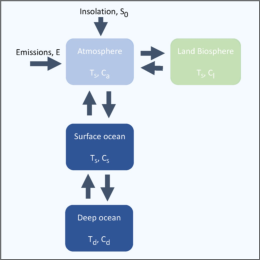
Introduction to Earth System Modelling – Summer semester (with Victor Brovkin)
In this course we introduce the main components of the Earth system, components that regulate matter and energy flows in ways that determine Earth’s climate. Based on an understanding of the essential contributions of these varied components the students develop and explore the dynamics of the simplest possible earth-system model.
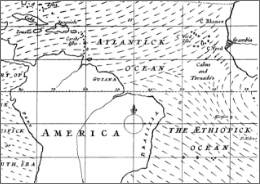
The Trades – Winter 2020/2021
The Trades are one of the major wind systems of the general circulation of Earth’s atmosphere, and as such play an important role in the climate system. In this courseI will describe what we observe about the trade winds, the theories we use to interpret or explain these observations, and the puzzles that remain.
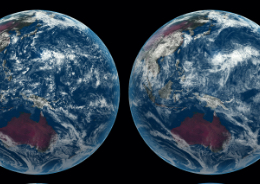
Global Circulation and Climate - Winter 2019/2020
The course will explore the interactions between circulation and climate through through the perspective of selected and long-standing biases in Earth System Models. Six different biases are selected (syllabus), and used to develop the conceptual foundations of climate modelling. The class is co-taught with Hauke Schmidt.
T1: Stratocumulus (slides); T2: Tropical Thermal structure (slides); T3: Deep Convection and Tropical SSTs (slides); T4: The Meridional Overturning Circulation; T5: Stratospheric temperature bias (slides)
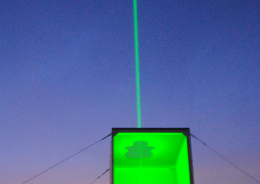
Principles of active radar and lidar remote sensing - Winter 2017/2018
The course will introduce the principles of active radar and lidar remote sensing, with a focus on clouds, water vapor and aerosol. Synergistic uses of radar and lidar so as to infer cloud microphysical properties will also be introduced. An effort will be made to provide students with hands on experience with radar and lidar data and data processing.

The Atlantic ITCZ - Winter 2016/2017
The lectures will review basic concepts in tropical dynamics (moist thermodynamics, convective parameterization basics, weak-temperature gradient approximations, equatorial waves) and then proceed to circulation systems (MJO, Hadley/Walker Cells, land=sea circulations, Monsoons, and maybe even a tropical cyclone appetizer). It will be a mix of reading selected papers from the literature and prepared lectures.

Clouds, Circulation and Climate Sensitivity - Winter 2014/2015
This class well develop and explore the Four Questions (of the WCRP Grand Science Challenge on Clouds Circulation and Climate Sensitivity) : (i) What controls the position, strength and variability of storm tracks? (ii) What controls the position, strength and variability of the tropical rain belts? (iii) What role does convection play in cloud feedbacks? (iv) What role does convective aggregation play in climate?
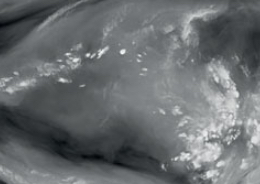
A Climate System View of Radiative Transfer - Winter 2013/2014
These lectures explores how basic concepts in radiative transfer, like Wien's displacement law, the absorption spectrum of simple molecules, line broadening and continnum emission, help set basic properties of Earth's atmosphere. Radiative-convective equilibirum is introduced and developed as a basis for exploring the forcing-feedback-response framework, and related diagnostic tools, for understanding climate change. A particular focus will be on the interactions of cloud and radiation and and elucidation of their ultimate importance for basic properties of the climate system.

A Climate System View of Clouds and Convection - Winter 2011/2012
These lectures explore the climate and climate dynamics of cloudy atmospheres. Different ways clouds and convective processes contribute to the state and changes in the climate system are reviewed. Topics include: the energy budgets of the top of the atmosphere and the surface, and the effects of clouds on these budgets, and controls on surface temperature. Concepts related to cloud and aerosol effects, forcing, feedbacks, and adjustments to climate perturbations will also be introduced and developed.
Lectures notes | Slides
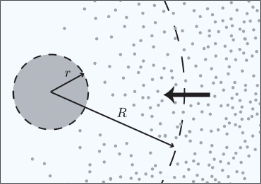
Cloud (and Aerosol) Physics - Winter 2010/2011
These lectures present a description of the thermodynamic and microphysical laws that govern the microphysical structure of clouds and precipitation. In addition to reviewing the elements of cloud (and aerosol) microphysics this course reviews the different types of models that have been developed to describe such processes; basic measurement techniques, including remote sensing; and some of the important outstanding questions. The course is taught at an advanced undergraduate level and lectures are given in German.
Lectures notes

Atmospheric Moist Convection - Winter 2009/2010
This course (15 lectures of about 2 hrs each) will give an introduction and overview to the structure and theory of atmospheric moist convection. My focus will be to develop our theoretical understanding of this class of atmospheric phenomena, particularly as it relates to the structure and sensitivity of the climate system. The intended audience is Masters or PhD level students, certainly those that have a basic understanding of meteorological concepts and atmospheric thermodynamics. A goal will be to develop the basis for students to pursue PhD research on interesting questions pertaining to atmospheric moist convection and its role in the climate system.
Slides
Videos über die Forschung von Professor Stevens
Curiosity Meets Discovery
Erfahren Sie in der Vortragsreihe „Curiosity Meets Discovery“ des Max-Planck-Instituts für Neurowissenschaften in Florida, welche erstaunlichen Entdeckungen aus Max-Planck-Instituten in aller Welt kommen. Am 16. Dezember 2021 war unser Institut an der Reihe, und Prof. Bjorn Stevens hat einen Vortrag mit dem Titel „Understanding Climate Science“ gehalten. Er wird Ihnen die neuen Exa-Skalen-Rechenressourcen vorstellen, die ganz neue Klimasimulationen ermöglichen werden.
Video vom: 16.12.2021
Faster Faster — machine learning our way to a new generation of storm-resolving Earth system models
Exascale-Computersysteme ermöglichen Erdsystemmodelle mit einer stark verbesserten physikalischen Genauigkeit. Diese Fortschritte sind mit erheblichen Rechenkosten verbunden. Das maschinelle Lernen kann den Informationsgehalt dieser neuen Generation von Modellen effizient identifizieren, extrahieren und manipulieren. Dadurch kann es dazu beitragen, die neuen Modelle so effektiv wie möglich zu nutzen und Methoden zu entwickeln, die auch auf eine größere Klasse von Problemen verallgemeinert werden können.
Vortrag von Bjorn Stevens im Rahmen der Veranstaltungsreihe "AI for Good: Accelerating Climate Science with AI", einer Veranstaltungsreihe der ITU, der Sonderorganisation der Vereinten Nationen für Informations- und Kommunikationstechnologien.
Video vom: 08.09.2021
Clouds, Circulation and Climate Sensitivity — EUREC4A!
Im Rahmen der Hamburger KlimaCampus Colloquium-Reihe präsentiert Prof. Bjorn Stevens die Forschung, die der Messkampagne EUREC4A zugrunde liegt. Wissenschaftler*innen aus Barbados, Deutschland und Frankreich leiteten dieses große Feldexperiment. Prof. Stevens erläutert die allgemeine Durchführung und gibt weniger als ein Jahr nach Abschluss der Kampagne Einblicke in die ersten Ergebnisse.
Video vom: 04.02.2021
Klimafaktor Wolken — Feldkampagne „EUREC4A“ will eines der großen Rätsel der Klimawissenschaften entschlüsseln
Vom 20. Januar bis zum 20. Februar 2020 untersuchte die Feldstudie EUREC4A (Elucidating the role of clouds-circulation coupling in climate) Passatwolken im tropischen Atlantik. Das Ziel der internationalen Feldstudie war es, das Zusammenspiel zwischen Wolken, Konvektion und Zirkulation und ihre Rolle für den Klimawandel zu erforschen. Sie wurde von Prof. Bjorn Stevens und Dr. Sandrine Bony (Laboratoire de Météorologie Dynamique) geleitet. Ihre Initiative baut auf einer jahrzehntelangen Zusammenarbeit mit Wissenschaftler*innen aus Barbados am Caribbean Institute for Meteorology and Hydrology unter der Leitung von Dr. David Farrell auf und erweitert diese.
Film: Iulian Fortuna, Schnitt: Marius Léna. Compania Fortuna - 2020.
Video vom: 30.11.2020
"Climate Science in the Age of Exascale" by Bjorn Stevens
Vortrag von Professor Bjorn Stevens, Direktor am Max-Planck-Institut für Meteorologie, auf der Konferenz „SC20: The International Conference for High Performance Computing, Networking, Storage, and Analysis“. Mit einer Einführung von Konferenzleiterin Christine E. Cuicchi. Prof. Stevens erörtert, wie sich das Exascale-Computing auf zwei Möglichkeiten auswirkt, die die Grundlagen der Klimawissenschaft verändern. Die eine ergibt sich aus dem, was Exascale-Computersysteme ermöglichen werden, die andere aus dem, was sie nicht ermöglichen werden.
Einführung: 00:00-08:22
Vortrag von Prof. Stevens: 08:22-57:38
Video vom: 16.11.2020
Wie bewölkt ist die Erde?
Dieses Video von Prof. Bjorn Stevens beschäftigt sich mit Wolken und ihrer Bedeutung für das Klima (Sprache: Englisch). Bisher wurde angenommen, dass Bewölkungsmuster durch großskalige Wettersysteme kontrolliert werden. Prof. Stevens und seine Ko-Autoren zeigen jedoch, dass kleine und mittlere Skalen ein bisher vernachlässigtes Puzzleteil sind, das wichtige Erkenntnisse darüber liefert, wie sich die Bewölkung der Erde in Zukunft entwickeln könnte. © Bjorn B. Stevens & Latest Thinking. CC-BY 4.0
Video vom: 26.04.2020
In welchem Ausmaß überlagern Aerosolpartikel in der Atmosphäre die Effekte von Treibhausgasen?
In diesem Interview spricht Prof. Bjorn Stevens (in englischer Sprache) über seine Forschung und die Frage: In welchem Ausmaß überlagern Aerosolpartikel in der Atmosphäre die Effekte von Treibhausgasen? © Latest Thinking GmbH
Video vom: 23.10.2016
Wasser — Der Wegweiser zum Verständnis von Wetter und Klima
Was macht das scheinbar kleine Wassermolekül so wichtig? Kann man mit einem besseren Verständnis über Wasser auch die Atmosphäre, das Wetter, das Klima und den Klimawandel besser verstehen? Prof. Bjorn Stevens war am 15.10.2015 am New England Aquarium zu Besuch, um im Rahmen der John Carlson Lecture zu diesen Fragen einen Vortrag zu halten (in englischer Sprache).
Video vom: 15.10.2015
Wolken — mehr Schatten im Treibhaus?
Welchen Einfluss haben Wolken auf den Klimawandel? Direktor Prof. Bjorn Stevens untersucht diese Frage mit seinen Mitarbeiter*innen und erklärt die Zusammenhänge.
Video vom: 01.12.2014
